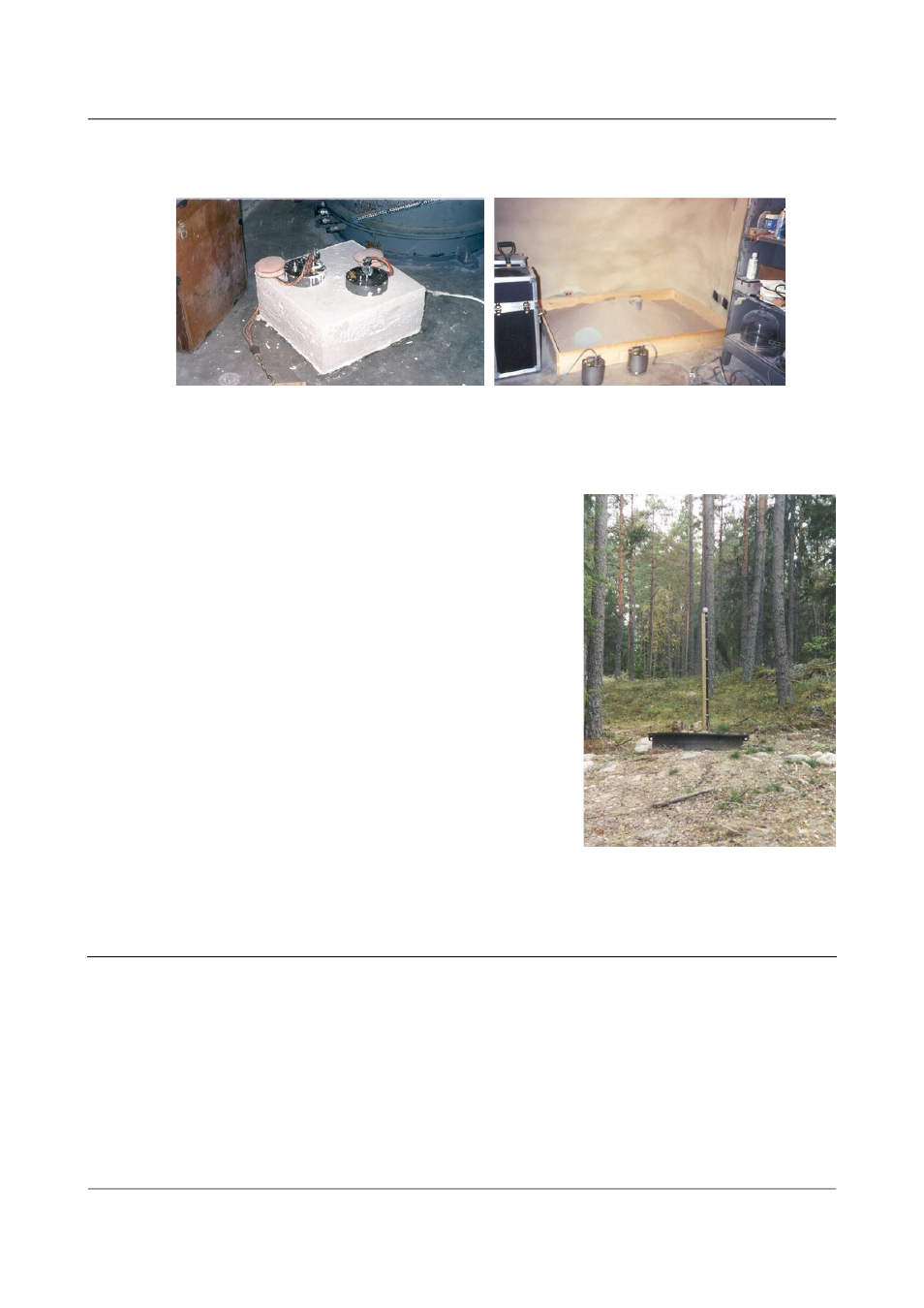6 rapid installation – Guralp Systems CMG-3ESPCD User Manual
Page 17

CMG-3ESPCD Digital Broadband Seismometer
Installing the 3ESPCD
Other installations have been attempted with the instrument encased in
plaster of Paris, or some other hard-setting compound (left):
Again, this method produces inferior bonding to the instrument, and moisture
becomes trapped between the hard surfaces. We recommend the use of fine
dry sand (right) contained in a box if necessary, which can also insulate the
instrument against convection currents and
temperature changes. Sand has the further
advantage of being very easy to install,
requiring no preparation.
Finally, many pit installations have a large
space around the seismometer, covered with
a wooden roof. Large air-filled cavities are
susceptible to currents which produce
lower-frequency vibrations, and sharp edges
and corners can give rise to turbulence. We
recommend that a wooden box is placed
around the sensor to protect it from these
currents. The emplacement may then be
backfilled with fresh turf to insulate it from
vibrations at the surface, or simply roofed as
before.
By following these guidelines, you will
ensure that your seismic installation is ready to produce the highest quality
data.
3.6
Rapid installation
This section details a method of deploying 3ESPCD instruments with the
minimum of additional equipment. This is recommended for situations
where seismic instrumentation needs to be installed very quickly, e.g. to study
a resumption of volcanic activity, or where difficulty of access to the site
prevents you from constructing a full seismic pit. You should always
construct a pit if possible (see Section 3.4 on page 14), since the data
produced will be of significantly higher quality.
17
Issue B - November 2013
